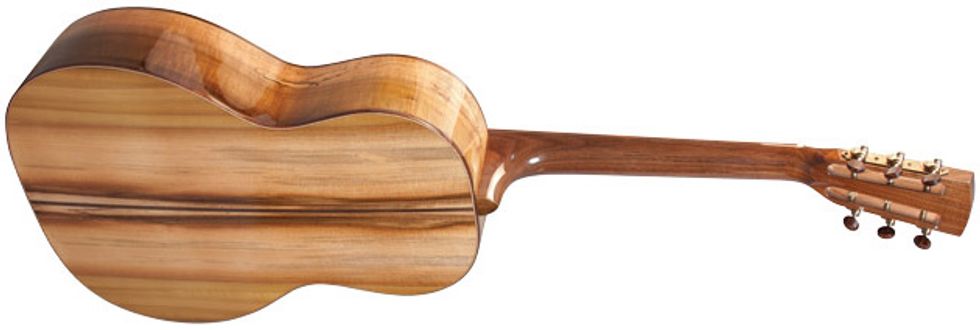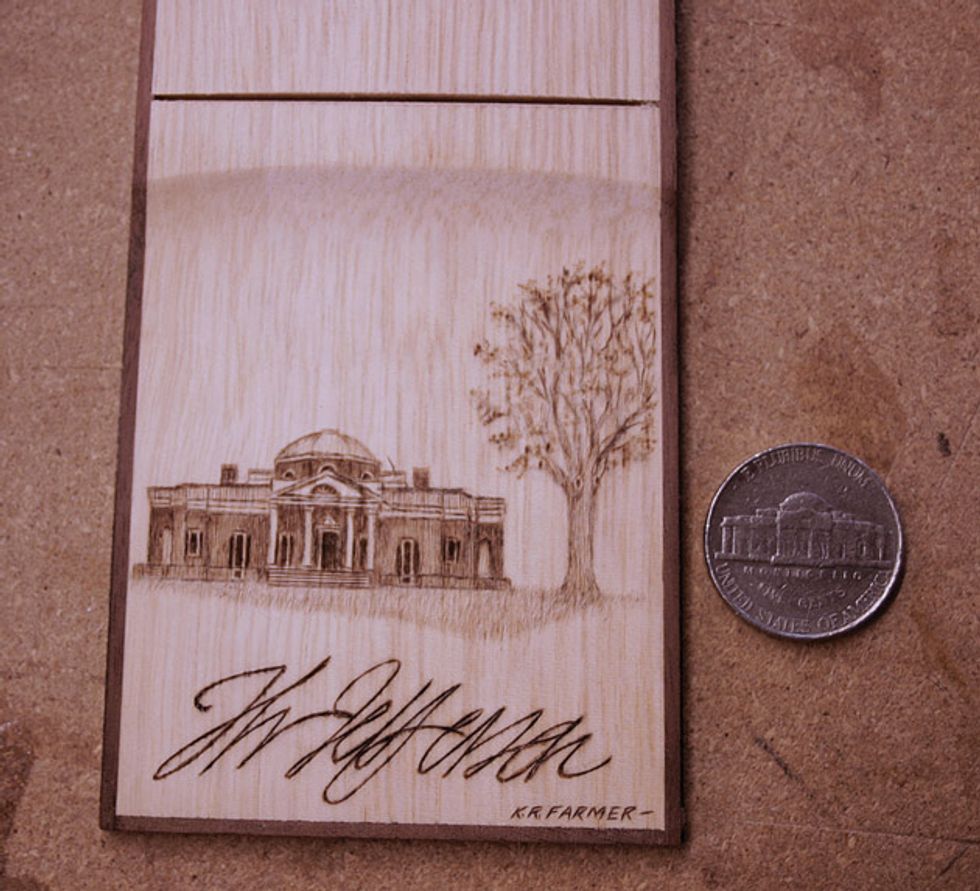As guitar makers, we’re often asked to talk about the most special and spectacular woods we’ve built with in the course of our careers. Though I have worked with all of the most sought-after exotics and highly figured woods over the years, my all-time favorite experience was with the seemingly lowly species of tulip poplar. This was no ordinary tulip poplar, however. The particular tree it came from had been planted by none other than Thomas Jefferson, directly outside his study at the magnificent Monticello.
According to Jefferson’s notes, the tree was planted on April 16, 1807. He was a meticulous record keeper about all things, and, in particular, all things Monticello and its gardens. Our third POTUS even included a handwritten map showing the placement of the tree.
Fast-forward to 2008 when the old tree had obviously been dying for at least 30 years. Every effort had been made to save the old girl, but there was fear that it would topple over onto the iconic home depicted on our country’s nickel coin. So, in June 2008, the tree was carefully removed. And right away, the folks at Monticello started to dole out the wood to selected artisans so it could forever live on in the form of various high-end products.
Through a connection at Monticello, we were lucky enough to be included, so my partner Jeff Huss and I ventured across the mountain one day to see what all the fuss was about. We had never built a guitar out of poplar, but we knew this was a unique opportunity that we couldn’t pass up. And we figured that if it was carefully manipulated, poplar should be able to produce as good a tone and volume as any of the other non- or semi-hardwood species we use regularly.
When we arrived at Monticello, we were shown a collection of several boards from the tree. While they had been cut correctly (quartersawn) for guitar building, they lacked any really nice figure or color. We moved on to another spot near the expansive property to see some more of the available wood. As we started to sort through the next pile, this time we were astonished at the beauty of the wood. It was highly spalted and colored, and we knew then that we must build out of it. So, we brought a good number of boards back to the shop with us and began the process of cutting them up.
A character-rich aesthetic isn’t often associated with poplar, but the back and sides sourced from Thomas Jefferson’s tree for this OO-style guitar beg to differ.
We decided on an OO body, and that we would use as many woods native to Virginia as possible. The tulip poplar we acquired was utilized for the back, sides, peghead veneer, and rosette. Persimmon was sourced for the fretboard and bridge, and we used Appalachian red spruce for the top and top bracing. We did not want to use shell inlays for decoration, so we instead hired an artist to do an incredibly detailed wood burning of Monticello on the fretboard.
The entire project turned out to be a very positive and humbling experience for our staff. It’s not every day that a piece of history like this comes your way, and I—as a native Virginian and U.S. history enthusiast—found it to be one of the most rewarding things I’ve ever done. We were able to produce a total of six guitars from the wood we received, and we built and sold them in partnership with the Thomas Jefferson Foundation.
Rather than using shell inlay or the like to adorn the persimmon fretboard, the team at Huss & Dalton opted for a wood-burned representation of Jefferson’s iconic residence.
Pretty much whenever we’re asked about the Jefferson guitars, we’re also asked about their sound. I would say they’re very similar to a good, hard-maple guitar, although maybe a bit warmer and woodier. The guitars had very nice ringing trebles, but none of the harsh tone that’s sometimes associated with maple.
I think a lesson that can be taken away here is that excellent guitars can be made from all kinds of woods that we sometimes wouldn’t suspect, if we keep an open mind. I say this because some of the “purists” who enjoy spending a good deal of time on internet forums were downright outraged that we had made such an expensive guitar from the seemingly unglamorous tulip poplar, even with the historical significance associated with this particular stock.
So, when I’m asked by these types of folks what the guitars sound like, I can’t help myself from giving a smart answer and simply say they sound something like this: “We hold these truths to be self-evident…”




















